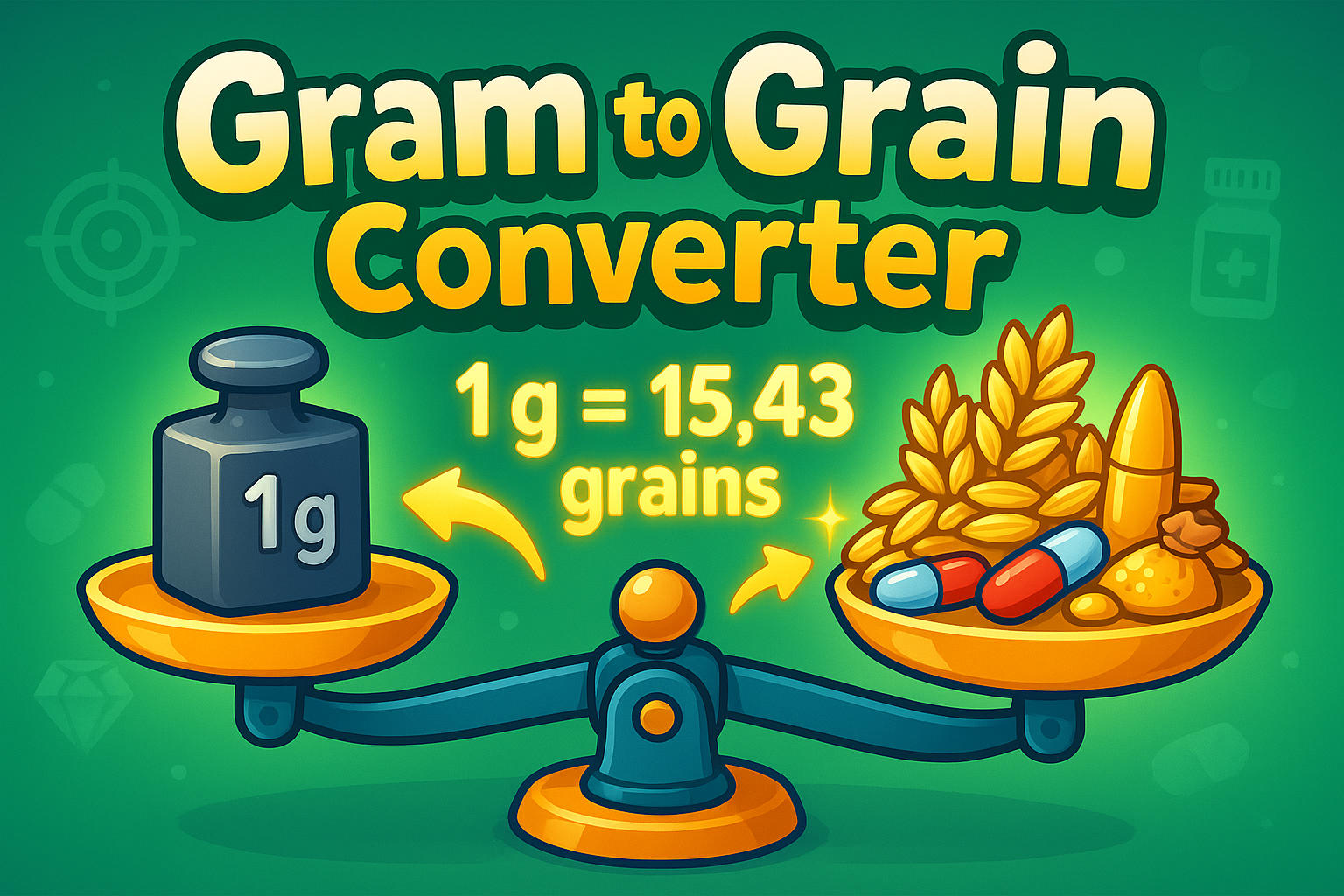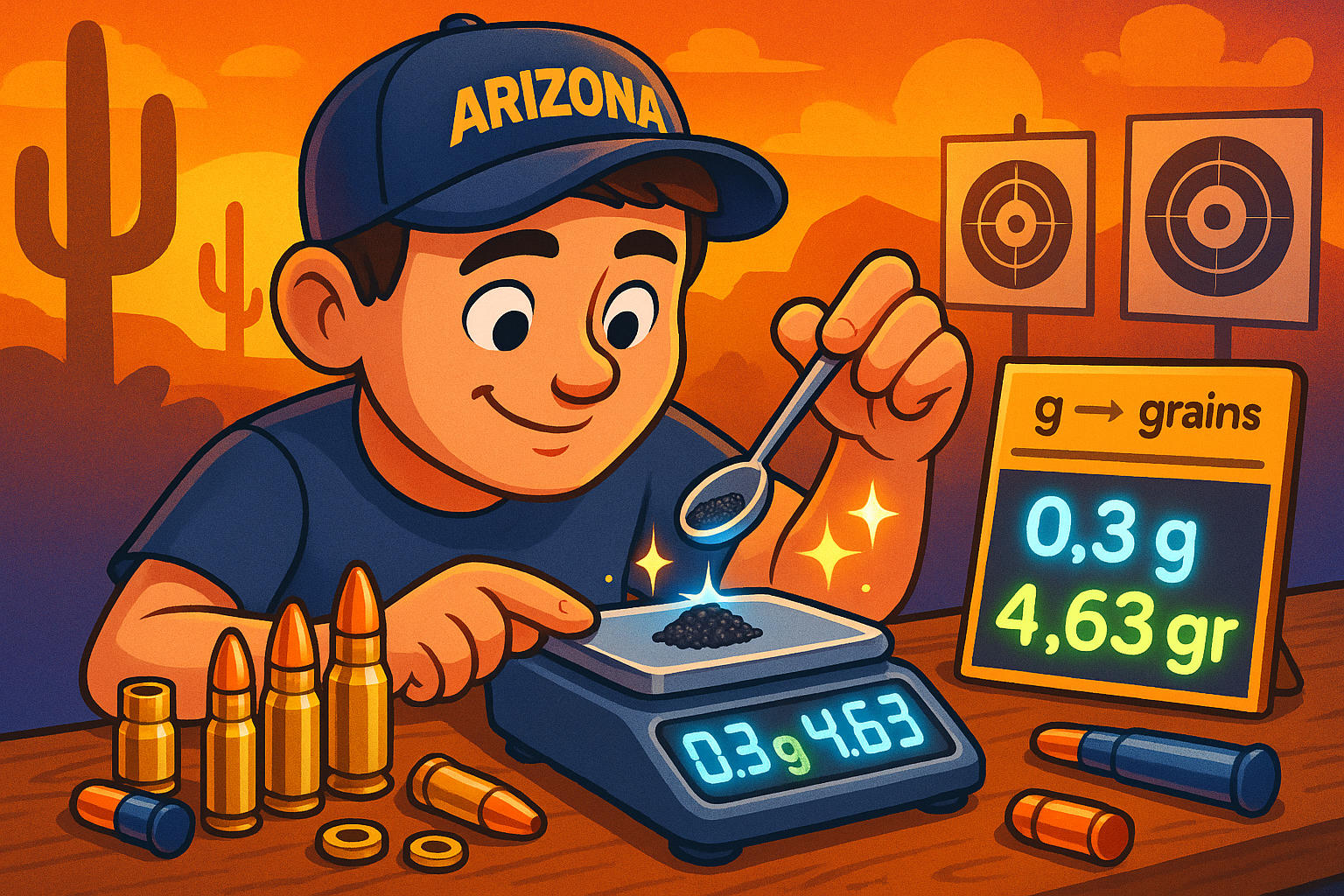Gram to Grain – How to convert g to gr
The grain (gr) is a historical unit of mass still widely used today in pharmaceuticals, ballistics, and precious metal measurement. When working with small weights or exact formulations, knowing how to convert grams to grains is essential. Jetcalculator’s Weight Converter gives you fast, precise results. You can also explore our full Unit Converter for broader conversions.
Gram and Grain:
-
Gram (g) is the standard metric unit of mass, used globally for a wide variety of measurements — from groceries to lab work.
For smaller or highly precise weights, it’s often helpful to convert grams to grains, especially in fields like medicine or ammunition loading.
-
Grain (gr) is an ancient unit of mass originally based on the weight of a single barley grain. Despite its age, it’s still used today in specialized areas.

How to Convert Gram to Grain
This simple formula: Grain = Gram × 15.4323584
Examples:
-
1 g → 1 × 15.4323584 = 15.43 grains
-
5 g → 5 × 15.4323584 = 77.16 grains
-
10 g → 10 × 15.4323584 = 154.32 grains
-
100 g → 100 × 15.4323584 = 1,543.24 grains
No need to memorize the numbers — the Gram to Grain Converter on Jetcalculator handles it instantly. For related units, check out our Weight Converter or try converting with our Gram to Milligram or Gram to Ounce converter.
Did You Know?
-
The grain is the only unit that appears in all three major weight systems: troy, avoirdupois, and apothecaries' weight.
-
In medicine, dosages for certain drugs (especially in the U.S.) are still measured in grains — like aspirin, which is often labeled “5 grains” (≈ 325 mg).
-
A .223 caliber bullet might weigh 55 grains, showing how grains are used in ballistics for precise ammunition specifications.
-
Jewelers use grains to measure the weight of small gems, especially diamonds or gold dust.
-
Historically, a grain was literally the weight of a single barley seed, and that’s how the unit got its name.
-
The phrase “a grain of truth” is derived from this unit — emphasizing how small and specific a single grain really is!
Caleb’s Precision in Reloading
Caleb, a hobbyist from Arizona, began handloading ammunition as part of his sport shooting practice. Most bullet weights and powder charges in his guides were listed in grains, while the scales he owned worked in grams. To avoid costly mistakes, he used the Gram to Grain Converter daily — converting as little as 0.3 grams of gunpowder (≈ 4.63 grains) for target rounds. The exact math gave him confidence that his custom loads were accurate, safe, and consistent.

Conclusion
Whether you’re preparing precise medication doses, reloading bullets, or working with micro-measurements in science, converting grams to grains is a necessary skill. With Jetcalculator’s Gram to Grain Converter, you’ll get accurate results fast. Try it now — and explore our full suite of conversion tools for every measurement need.

